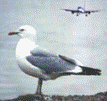Bird Strike Committee Proceedings

Bird Strike Committee-USA/Canada Joint Annual Meeting: 8th (2006)
Date of this Version
8-12-2006
Document Type
Article
Abstract
Airports must control the movement of storm water away from runways, taxiways, and aprons to insure the safety of aircraft operations. The U.S. Federal Aviation Administration recommends that such runoff be held for short periods, by use of detention ponds, so as to reduce use by wildlife (Advisory Circular No: 150/5200-33A; Hazardous Wildlife Attractants On or Near Airports). The purpose of our study was to quantify factors that potentially attract avian wildlife to stormwater management ponds so as to more efficiently direct resources toward management of hazards to aviation posed by these habitats, and provide critical input on the design of future stormwater-management structures. We are currently in the analysis phase relative to avian-use data collected weekly from 30 stormwater-management ponds in Washington near Seattle-Tacoma International Airport between 14 February 2005 and 17 February 2006. We are testing 2 primary hypotheses concerning avian use of these stormwater management ponds: 1) avian guild richness is most directly related to pond isolation (ha of wetland resources within 1 km) and 2) guild richness is influenced most by the combination of the surface area of the pond/wetland complex, relative area of emergent vegetation, and pond isolation. Here, we report our initial findings relative to model development, avian use of our 30 sample ponds, and potential implications for stormwater management at airports. Effective and economic management to reduce wildlife hazards at airport detention ponds is dependent upon first identifying/quantifying and prioritizing the factors attracting wildlife, then directing appropriate resources toward those threats.

